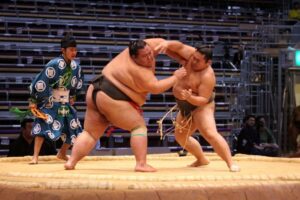
Matsuri is one of the most vibrant cultural traditions in Japan. These festivals take place throughout the year and reflect the deep connection between Japanese communities and their history, religion, and local heritage. From lively street parades to sacred rituals at Shinto shrines, Matsuri represents the heart of Japanese cultural identity.
What Is Matsuri?
Matsuri refers to traditional festivals in Japan. Most Matsuri are held at Shinto shrines, although some relate to Buddhist temples and regional customs. Each festival has its own meaning, rituals, and cultural values that have been passed down for generations.
Matsuri is more than a celebration. It brings communities together, strengthens cultural pride, and honors the spirits believed to protect the land and its people.
The Origins of Matsuri
The origins of Matsuri date back centuries. These festivals were created to express gratitude to the gods, ask for protection, pray for good harvests, and celebrate seasonal transitions. Over time, Matsuri evolved to include music, dance, parades, food stalls, and local performances.
Despite modernization, most Matsuri still preserve traditional rituals and costumes, making them an important cultural heritage that continues to attract millions of visitors every year.
Common Features in Matsuri
Although each Matsuri is unique, many share similar elements that define the festival experience.
Traditional Music and Dance
Performances such as taiko drumming, kagura dance, and flute ensembles create an energetic atmosphere.
Mikoshi Processions
A mikoshi is a portable shrine carried through the streets by locals. The belief is that the deity temporarily resides inside the mikoshi during the parade.
Colorful Decorations
Lanterns, banners, and traditional garments bring color and life to every festival.
Food Stalls
Visitors can enjoy classic Japanese street food such as takoyaki, yakisoba, taiyaki, and grilled snacks.
Popular Matsuri in Japan
Japan hosts thousands of festivals, but some are internationally recognized for their grandeur and cultural significance.
Gion Matsuri in Kyoto
One of the oldest festivals in Japan, known for its massive floats and elegant rituals.
Nebuta Matsuri in Aomori
Famous for its giant illuminated lantern floats shaped like warriors and mythical figures.
Kanda Matsuri in Tokyo
Celebrated with parades, performances, and vibrant mikoshi processions through the city.
Snow Festival in Sapporo
While more modern than others, this festival draws global attention with large ice and snow sculptures.
Why Matsuri Remains Important Today
Matsuri continues to flourish in modern Japan because it plays a vital role in cultural preservation and community bonding. The festivals strengthen family ties, attract tourism, and inspire pride in local traditions. They also offer a rare opportunity for people to disconnect from busy routines and experience the beauty of Japanese seasonal life.
For many visitors, Matsuri offers a deeper understanding of Japanese culture beyond temples, food, and technology. It showcases the joy, spirituality, and togetherness that define the Japanese way of life.
Matsuri is a living tradition that reflects Japan’s rich cultural heritage. Whether you experience a summer fireworks festival or a winter lantern parade, each Matsuri provides unforgettable memories and insight into the spirit of Japanese communities. With thousands of festivals held across the country, Matsuri remains one of the most powerful expressions of Japanese culture.





